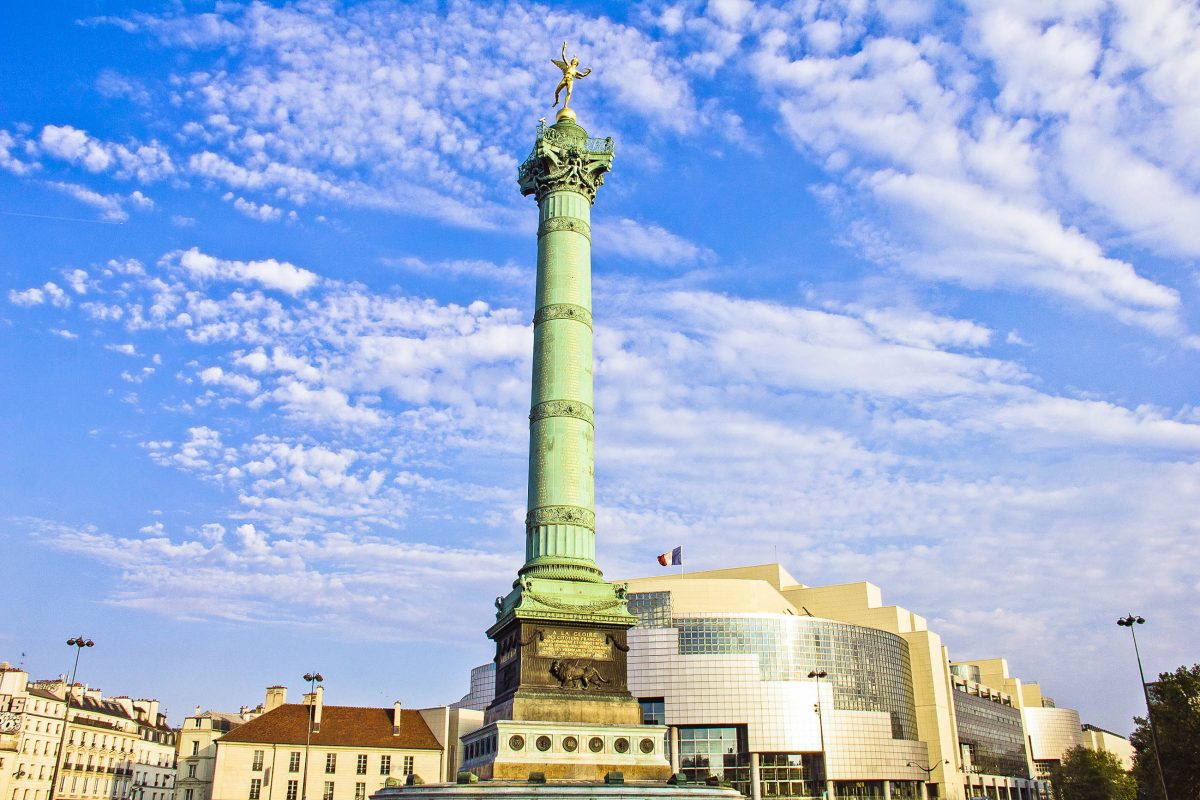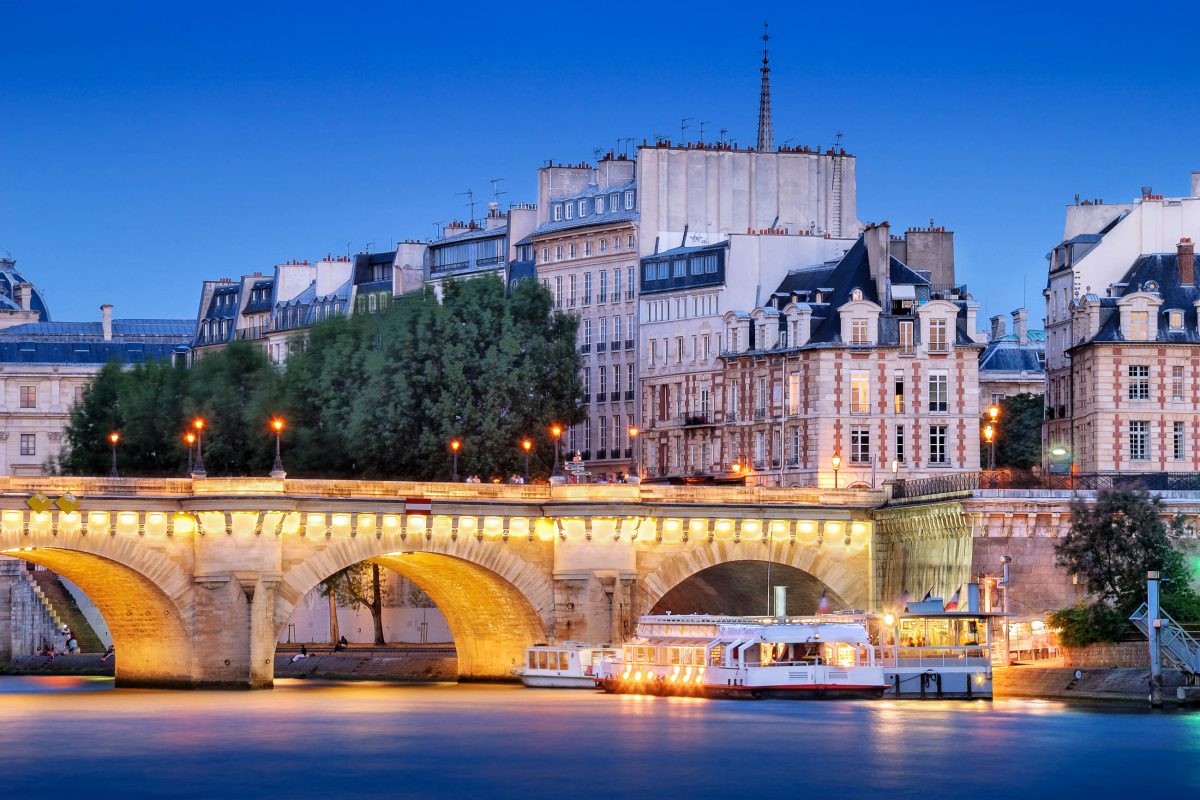Paris hat eine Vielzahl an attraktiven Sehenswürdigkeiten zu bieten. Genauer gesagt sind es 137 Museen, 300 Kirchen und 37 Brücken sowie 463 Parks und Gärten. Von einigen Sehenswürdigkeiten hat jeder zumindest schon einmal gehört. Doch es gibt noch viel mehr, was man in Paris erleben und entdecken kann.
Über die Hauptstadt Frankreichs gibt es viele interessante Zahlen, Daten und Fakten. Sie betreffen unter anderem die Einwohner und ihre Nationalitäten sowie die Stadtteile und das Alter der Stadt.
- Einwohner: In der Stadt Paris leben über 2,2 Millionen Menschen. Betrachtet man Paris als Metropolregion, sind es mehr als 12,4 Millionen Einwohner. Und es werden stetig mehr.
- Nationalitäten: In Paris leben etwa 40 verschiedene Nationalitäten, vom nordafrikanischen Regionen über Indochina bis hin zu Gebieten in Südamerika. Die Einwanderer aus der ganzen Welt haben Paris zu einer kosmopolitischen und multikulturellen Großstadt gemacht. Die meisten Einwanderer kommen aus Algerien, Portugal und Spanien.
- Besiedlung: Die Fläche von Paris misst etwa 105 Quadratkilometer. Im Verhältnis zu der Einwohnerzahl ist das eine recht kleine Fläche, weswegen Paris mit etwa 21.000 Einwohnern pro Quadratkilometer zu den am dichtesten besiedelten Großstädte gehört.
- Stadtteile: Paris gliedert sich in 20 Stadtteile. Sie sind nummeriert und erstrecken sich im Uhrzeigersinn vom Zentrum bis in die Außenbezirke.
Inhaltsverzeichnis
BILDER: Urlaub in Paris
Fotogalerie: Top Shots von Paris
Die Geschichte von Paris
Die ersten Einwohner von Paris waren die Mitglieder des keltischen Stammes Parisii. Im 3. Jahrhundert vor Christus suchte der Stamm auf der heutigen Île de la cité, einer der Seine-Inseln, Schutz vor Eindringlingen. Im Jahr 52 v.Chr. nahmen die Römer unter der Herrschaft von Julius Cäsar die Siedlung ein und nannten sie Lutetia.
Den größten Teil der Insel überließen die Römer den Parisii. Sie selbst bauten auf dem linken Ufer der Seine eine neue römische Stadt auf, genannt Lutetia. Dabei legten sie auch den für römische Städte typischen Cardo an, eine Hauptachse, zu der meist senkrecht eine weitere Achse (Decumanus) verlief.
Der Kreuzungspunkt der beiden Achsen bezeichnete das Stadtzentrum. Lutetia wurde aber nur durch einen Cardo geteilt, und zwar in einen administrativen Teil im Westen und einen religiösen Teil im Osten. Diese Struktur hat sich bis heute erhalten.
Die von den Römern errichtete Stadt war im Römischen Reich als „Civitas Parisiorum“ oder „Parisia“ bekannt. Erst 360 n. Chr. bekam die Stadt ihren heutigen Namen. Während der Herrschaft der Römer wurden viele Bauten errichtet: Paläste, Bäder und ein Amphitheater. Doch als das Römische Reich zusammenbrach, war Paris nur eine gering besiedelte Besatzungsstadt.
Wirklich bedeutend wurde Paris erst viel später. Durch König Chlodwig wurde die Stadt im Jahr 508 zur Hauptresidenz des Merowingerreiches erklärt. 987 wurde Hugo Capets König und Paris zur Hauptstadt Frankreichs.
Allmählich entwickelte sich Paris zum geistigen und kulturellen Zentrum, doch Kriege und die wiederkehrende Pest stoppten den Aufschwung. Im Hundertjährigen Krieg (1339–1453) war Paris von den Engländern besetzt und verlor seine Stellung als Hauptstadt. Erst 1437, unter Karl dem VIII., gewann die Stadt diesen Status zurück.

1654 kam König Ludwig XIV. im Kindesalter an die Macht. In den 72 Jahren seiner Regentschaft förderte er Kunst, Wissenschaft und Wirtschaft und modernisierte die Stadt. Mit dem Sturm auf die Bastille im Jahr 1789 begann die Französische Revolution und die Monarchie fand ein jähes Ende. 1804 wurde Napoleon zum ersten Kaiser Frankreichs gekrönt.
Nach den Weltkriegen, besonders nach dem zweiten, erholte sich die Stadt nur mühsam. Heute ist Paris mit seinen historischen Bauwerken für Touristen ein besonderes Erlebnis und noch immer sehr bedeutend in Sachen Kunst und Kultur.
Paris für Gourmets
Die Franzosen sind bekanntermaßen ein Volk der Genießer und so gibt es auch in Paris zahlreiche Gelegenheiten mit üppigem kulinarischen Angebot. Liebhaber der französischen Küche kommen in Paris voll auf ihre Kosten, wobei die Preise teils teurer ausfallen als in Deutschland.
Neben guter Hausmannskost und regionalen Spezialitäten kann man in Paris auch eher spezielle Speisen kosten, die nicht jedermanns Geschmack sind, wie etwa Schnecken. Doch die internationale Küche ist hier ebenso vertreten. Aufgrund der ehemaligen Kolonien Frankreichs findet man in Paris auch einige Restaurants mit nordafrikanischer Küche. Insgesamt ist in den vielen Restaurants, Brasserien und Bistros für jeden Geschmack etwas dabei.
Diejenigen, die lieber selber kochen, können sich auf einem der Märkte mit frischen Zutaten eindecken. Für Feinschmecker sind der „Marché d´Aligre“ und der „Marché des Enfants Rouges“ mit ihren vielfältigen Qualitätsprodukten genau das Richtige.
Paris verfügt über eine Vielzahl sehenswerter Orte, die man sich nicht entgehen lassen sollte. So ist ein Besuch in einem der insgesamt 8.000 Cafés ein Muss, im Stadtviertel St. German de Prés befinden sich besonders viele. Viele Cafés sind kulinarisch gesehen sehr einfach gehalten und bestechen durch ihre gemütliche Atmosphäre.
Andere haben ausgefallene und exklusive Speisen anzubieten. Während sich in manchen Cafés ein gutes Frühstück genießen lässt, kann man in anderen wunderbar zu Abend essen oder brunchen. Wer Paris besucht, sollte wenigstens ein original-französisches Croissant und ein Baguette probiert haben.
Feste und Feiern in Paris

Der Hauptstadt Frankreichs bietet seinen Besuchern und Einwohnern ein ausgiebiges Nachtleben. Es gibt viele angesagte Nachtclubs und Discotheken, in denen man feiern gehen kann, darunter „Alimentation Générale“, „La Rontonde“ und „Gibus Club“. Dazu kommen Theater und Shows. Doch auch tagsüber bestimmen die regelmäßigen Feste das Pariser Szeneleben.
Außerdem gibt es das ganze Jahr über Festivals wie das Fête de la Musique, Cinéma au clair de lune, Techno parade, das Fête des Jardins de Paris und viele mehr. Als Weltmetropole feiert Paris natürlich nicht nur die eigenen, nationalen Feiertage, sondern auch viele Feste aus anderen Kulturen. Dazu gehören das chinesische Neujahrsfest, das jüdische Rosch ha-Schana, das Garnesh-Fest der Inder und der Ramadan der Moslems.
Insiderwissen rund um Paris
Abgesehen von den typischen Informationen über Frankreich und Paris, sind da noch einige Fakten, die zum absoluten Insiderwissen gehören. Sie machen die Stadt einzigartig – der Name allein ist es nämlich nicht.
- Ein Allerweltsname: Den Namen „Paris“ verbindet man automatisch mit der Hauptstadt Frankreichs. Dabei tragen diesen Namen weltweit 30 Städte und Dörfer.
- Die kleinste Straße: Sie befindet sich im 2. Arrondissement der Stadt und heißt Rue des Degrés. Die Straße ist gerade einmal sechs Meter lang.
- Das älteste Haus: Es wurde im Jahr 1407 erbaut und steht in der 51, Rue de Montmorency, im 3. Arrondissement.
- Bienen in Paris: Die Stadt beherbergt etwa 12 Millionen Bienen in 300 Bienenstöcken. Damit gibt es fast genauso viele Bienen wie Einwohner in der Metropolregion.
- Die „Pont Neuf“ ist nicht die neunte Brücke: Als die „Pont Neuf“ erbaut wurde, war die Brücke sehr modern und unter anderem die erste Brücke, welche die beiden Seine-Ufer direkt miteinander verband. Deswegen wird sie noch heute „Neue Brücke“ genannt und ist inzwischen die älteste Brücke von Paris.
- Das einzige Stopp-Schild: In der gesamten Stadt gibt es nur ein Stopp-Schild. Platziert ist es an der Ausfahrt eines Baumaterialunternehmens im 16. Arrondissement.
- Die Katakomben von Paris: Sie haben eine Gesamtlänge von 300 Kilometern – das entspricht etwa der Strecke von Hamburg nach Berlin.
- Paris hat eine Freiheitsstatue: In Anlehnung an das Geschenk der Franzosen an die USA, steht in Paris eine kleine Ausgabe der Freiheitsstatue, die in Richtung der amerikanischen Freiheitsstatue blickt, als Symbol der Freundschaft zwischen den beiden Ländern.
- Der „Place de la Concorde“ ist eine riesige Sonnenuhr: Der 23 Meter hohe Obelisk, eine ägyptische Säule und zugleich das Hauptmonument des Platzes, ermöglicht es, die ungefähre Uhrzeit abzulesen. Man muss sich nur seinen Schatten in Bezug zur Position der Sonne anschauen. Auf den Bürgersteigen des Platzes kann man Stundenmarkierungen in römischen Zahlen erkennen. Das macht den Platz zu einer der größten Sonnenuhren weltweit.
- Kuriose Erkrankung: Jedes Jahr erkranken Touristen an dem sogenannten Paris-Syndrom, einer vorübergehenden psychischen Störung, die mit Schwindel, Angstzuständen, Halluzinationen bis hin zu Verfolgungswahn einhergeht.
Betroffen sind vor allem Japaner. Sie haben eine sehr romantisch-verklärte Vorstellung von der Stadt und dementsprechende Erwartungen. Sie erleiden eine Art Kulturschock, wenn sie das wirkliche Paris zu sehen bekommen. Die Hauptursache liegt in den großen kulturellen Unterschieden zwischen Japan und Frankreich, vor allem, was das Verhalten der Bevölkerung betrifft.




